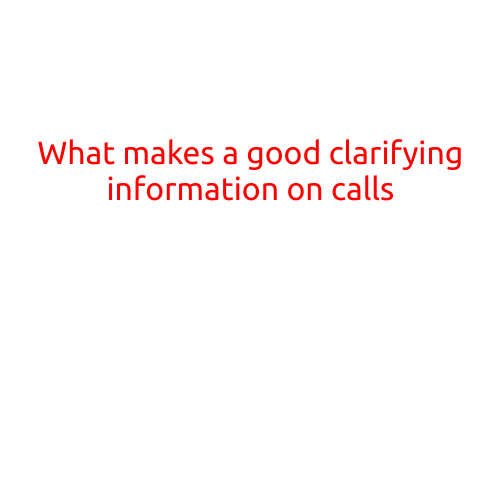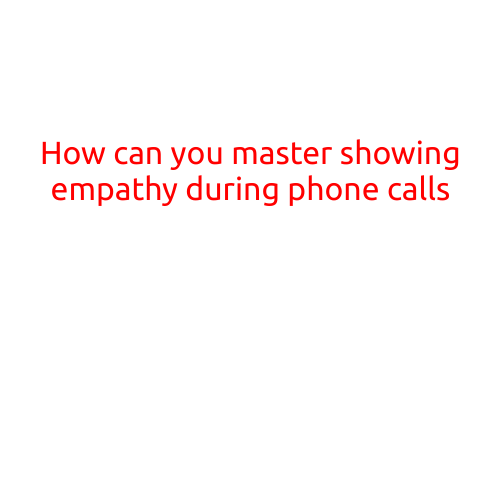
What Makes a Good Clarifying Information on Calls
When on a call, it’s not uncommon to encounter situations where the conversation is unclear, confusing, or requires further explanation. This is where clarifying information comes into play – providing additional context or details to ensure that the caller, or in this case, the customer, understands the information being communicated. In this article, we’ll explore what makes a good clarifying information on calls, and why it’s essential for excellent customer service.
Why Clarifying Information is Important
Clarifying information helps to prevent misunderstandings, miscommunications, and frustration. When a caller is able to clearly understand the information being provided, they’re more likely to:
- Make informed decisions
- Take the necessary actions
- Feel confident in their understanding
- Provide accurate feedback
On the other hand, lack of clarifying information can lead to:
- Confusion and frustration
- Miscommunication and errors
- Negative customer reviews and loss of trust
Key Characteristics of Good Clarifying Information
So, what makes a good clarifying information on calls? Here are some key characteristics to keep in mind:
- Clear and Concise Language: Use simple, straightforward language that’s easy to understand. Avoid using jargon or technical terms that might confuse the caller.
- Relevant Details: Provide context-specific details that relate to the call. This could include specific dates, times, locations, or names.
- Specific Examples: Use concrete examples to illustrate complex concepts or processes. This can help the caller visualize the information and better understand the topic.
- Open-Ended Questions: Encourage the caller to ask questions by using open-ended questions that promote discussion and clarification.
- Follow-Up Confirmation: After providing clarifying information, confirm with the caller that they understand it. This ensures that the information has been successfully conveyed and reduces the risk of miscommunication.
- Active Listening: Pay attention to the caller’s responses and repeat back what you’ve understood from their feedback. This shows that you’re actively listening and confirms your understanding of their needs.
Best Practices for Providing Clarifying Information
To provide excellent clarifying information on calls, consider the following best practices:
- Anticipate Questions: Think ahead and anticipate potential questions or concerns the caller might have. This allows you to address them proactively and prevent confusion.
- Use Analogies and Metaphors: Use relatable analogies or metaphors to simplify complex concepts and make them more accessible to the caller.
- Provide Alternative Options: Offer alternative solutions or scenarios that cater to the caller’s specific needs and preferences.
- Keep it Simple: Avoid using complicated terminology or technical jargon. Instead, focus on clear, concise language that’s easy to understand.
- Stay Patient: Remain patient and calm, even in situations where the caller is frustrated or confused. This helps to de-escalate tensions and promote a positive interaction.
Conclusion
Clarifying information is a crucial aspect of excellent customer service. By providing clear, concise, and context-specific information, you can ensure that callers understand the information being communicated and feel confident in their understanding. By following the key characteristics and best practices outlined in this article, you can improve your clarifying information skills and provide outstanding customer service. Remember, a well-crafted clarifying information can make all the difference in building trust, resolving issues, and ultimately, driving customer satisfaction.





